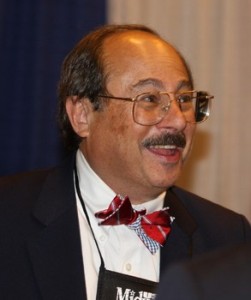By Dave Workman
Senior Editor
Anti-gun California Sen. Dianne Feinstein’s measure to permanently ban so-called “assault weapons” was passed by the Senate Judiciary Committee on a strict party-line vote, re-kindling public debate over the ownership of semi-auto sporting rifles and the magazines designed for them.
On a strict party-line 10-8 vote, the Committee passed Feinstein’s bill, but Capitol Hill insiders told TGM that the legislation faces a tough uphill battle when it reaches the full Senate will not likely be approved by the full Senate.
That much is virtually guaranteed, as gun owners – led by groups including the National Rifle Association and Citizens Committee for the Right to Keep and Bear Arms – are already contacting Capitol Hill.
CCRKBA Chairman Alan Gottlieb said his members he would encourage CCRKBA members to contact Congress in opposition to the measure.
“Instead of banning the most popular firearm in the country,” he said in a statement, “we need to ban politicians who assault our rights…Demonizing certain firearms, and by default the people who own them, has become a scapegoat strategy by politicians who have allowed a broken justice system to release violent offenders back on the street while disarming their potential victims. By focusing their energy on disarming law-abiding citizens, politicians like Sen. Feinstein are perpetuating a myth that firearms cause crime. That’s as foolish as believing that cars cause drunk driving.”
Gottlieb, who is attending the Conservative Political Action Conference in Washington, D.C., added, “Public policy and constitutional rights should not be subject to the whims of gun prohibitionists who are quick to exploit the crimes committed by a few crazy people, in order to advance their agenda of public disarmament.”
According to FBI/Justice Department statistics, in 2011 – the most recent year for which data is available – out of 12,664 murders, only 323 were known to have been committed with rifles. That’s less than half the number (728) committed with “personal weapons” that include hands, feet and fists. Another 1,694 people were stabbed or slashed to death.
The Judiciary Committee debate was heated at times, and according to Fox News, Sen. Lindsey Graham (R-SC) reminded the panel that rifles are used in a fraction of murders every year. He said banning these guns would provide a “false sense of security,” Fox reported.
But the most heated exchange occurred between Feinstein and Texas Sen. Ted Cruz over the possibility of eroding the Bill of Rights.
“Would she deem it consistent with the Bill of Rights,” Cruz asked, “for Congress to engage in the same endeavor that we are contemplating doing to the Second Amendment, in the context of the First or Fourth Amendment?”
“It’s fine you want to lecture me on the Constitution, I appreciate it,” Feinstein bristled. “Just know that I’ve been here a long time, I’ve passed a number of bills, I’ve studied the Constitution myself. I am reasonably well-educated and I thank you for the lecture. Incidentally, this (bill does not prohibit — you use the word prohibit — it exempts 2,271 weapons. Isn’t that enough for the people of the United States? Do they need a bazooka? Do they need other high-powered weapons that other people use in close combat? I don’t think so. So I come from a different place than you do.”
Feinstein acknowledges that she faces an uphill battle before the full Senate, and even if that happens, the measure is likely dead on arrival in the House. Unlike the first time a ban on semiautomatics was pushed, in 1994 under then-President Bill Clinton, there is ample data available to allow gun rights advocates to argue that the ban accomplished nothing and that violent crime was barely affected.
Today, millions more citizens who actually own the firearms that would be included under the ban, would be affected. The Clinton ban expired in 2004, and in recent years – due largely to public concerns about President Barack Obama’s anti-gun agenda – sales of modern sporting rifles have skyrocketed.
.




